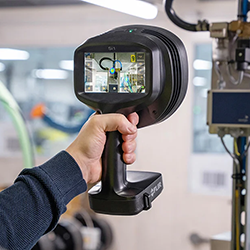2016: Why Manufacturers Should Embrace Real-Time Data
Automotive Industry 4.0 - Disrupting the Industry?
Boomers at Work: Retirement vs. Working … It's Complicated
A New Boeing Patent Describes Levitating 3D Printing
Collaborative Robots Working In Manufacturing
Three-Step Verification for Lean Product Labeling
Republican-Leaning Cities Are At Greater Risk Of Job Automation
Becoming the Factory of the Future: How to Prepare Now for the Industrial Internet of Things
Industrial IoT Market Nears $132 Billion in 2020: Technavio
Industry 4.0: What businesses need to know
Four Points You Need to Consider when Thinking About Automating or Robotizing Your Operations
UK 'risks losing out in Industry 4.0 race'
Three Things to Do Before Operating Your New Automated Equipment
Boy, do Fanuc and Cisco have a deal for your factory
Is Velo3D Plotting a 3-D Printed Robot Revolution?
Records 1846 to 1860 of 1914
First | Previous | Next | Last
Engineering - Featured Product

